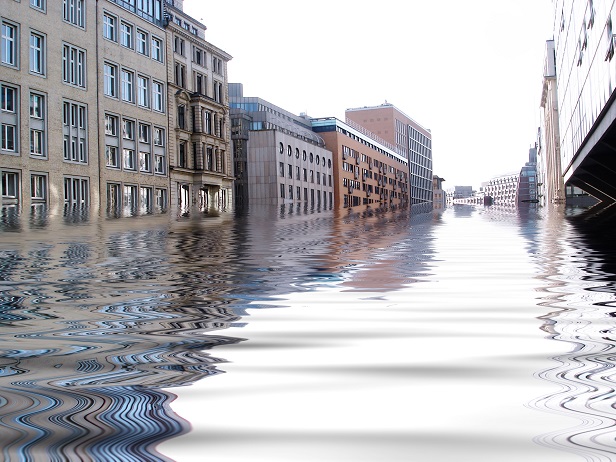Should we be getting a little concerned?
- Venice is inundated and locals fear the old city is doomed.
- London struggles to find engineering solutions to hold back regular flood threats from the Thames.
- Recent scientific studies suggest the viability of major Asian coastal cities is under serious threat in coming decades…like soon.
- Here in the U.S., tinder-dry California suburbs recently deal with another round of worsening annual brush fires, which lead to mud slides in the ever-shorter rainy seasons.
- Miami Beach now floods on at least a monthly basis. The entire Eastern Seaboard is increasingly vulnerable to rising tidal levels, including the coastlines in the New York metropolitan area.
- Below sea level New Orleans is only one of the major cities along the Mississippi River vulnerable to extreme flooding while sections of the Gulf Coast erode in the face of rising tides.
- Unrestrained development in Houston has created a vast flood plain at risk to increasingly powerful Gulf storms.
- West of Denver to the California Coast the problem is too little water as mountain runoff into the Colorado River doesn't provide enough to supply increasing populations in vast dry or drying out regions.
Should we be following this course?
- The US pulls out of the Paris climate accords, abdicating a global leadership role to deal with climate change.
- Various environmental restrictions are eased to allow development in watershed areas or permit various forms of farm and industry related pollution to flow into available water sources.
- Air pollution and CO2 emission rules are weakened while federal lands are opened to more oil and gas drilling (that could lead to more not less CO2 emissions).
The US is clearly back tracking from Nixon era clean air and water acts which had demonstrably improved the nation's environment and public health.
And the real estate industry—where does it stand?
It can point to building or retrofitting LEED certified commercial buildings and greater interest in adopting various ESG standards in development and property management. Everybody advocates "sustainability." And why not install energy saving systems or plant landscaping that might help decrease water runoff, reduce CO2 levels a bit, and provide some cooling shade. It's really a no-brainer for long-term cost savings on energy bills and it provides nice window dressing for major investors and tenants who want to highlight good corporate responsibility. But mostly isn't this just window dressing?
What about the big land-use lifts like coming to terms with curtailing development in some vulnerable areas or embracing government policies to place greater emphasis on protecting water sources and open space? Does it make sense to keep building residential tracts in potential fire zones or continuing to develop oceanfront high rises? Is it sensible to keep constructing in areas dependent on billion-dollar levees along the Mississippi and other major estuaries when the water gets shunted from avoiding some population centers into potentially destroying others? Is it realistic to encourage development in arid areas with severely limited water reserves without a long-term water plan to serve future residents?
It appears to still make business sense if you can get local governments looking to increase their tax base to approve projects, cash in and sell them off as quickly as possible, lobby to keep untenable federal flood insurance available to help allay buyer concerns, and let the buyers or investors ultimately gamble that climate change science is a bunch of hooey.
But if the science is on target, the consequences will be severe and realized maybe sooner than later. We've seen people lose their homes along the coasts. There was Katrina in New Orleans, and Harvey in Houston, and Sandy in New York. Fire-ravaged California must deal with highly disruptive, controlled electricity blackouts, the PG&E bankruptcy, and the wiping out of communities like Paradise. Anticipated summertime forest fires now regularly and seriously comprise air quality from Vancouver south to Seattle and Portland. But these are just small tastes of what could be our nightmarish future. And the potential multi-billion-dollar, and eventually trillion-dollar costs of inaction will be staggering apart from the ongoing misery and ultimate dislocation.
The real estate industry, which helps bankroll elected officials through campaign contributions, has not shown much urgency in addressing the climate threats and future costs. It seems mostly interested in the possibility of now—today's profits and tax breaks to create larger profits. Rebuilding and new development in parlous places is just part of the profit-making equation. Taking a forward-looking leadership role in addressing the really difficult choices to avoid large scale loss—not so much. That can be somebody else's problem as we all roll the dice.
At least we have LED light bulbs in all our buildings.
© Touchpoint Markets, All Rights Reserved. Request academic re-use from www.copyright.com. All other uses, submit a request to [email protected]. For more inforrmation visit Asset & Logo Licensing.







